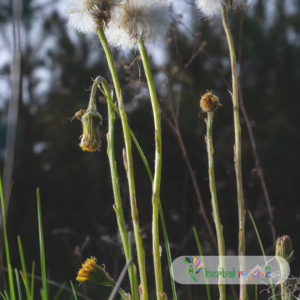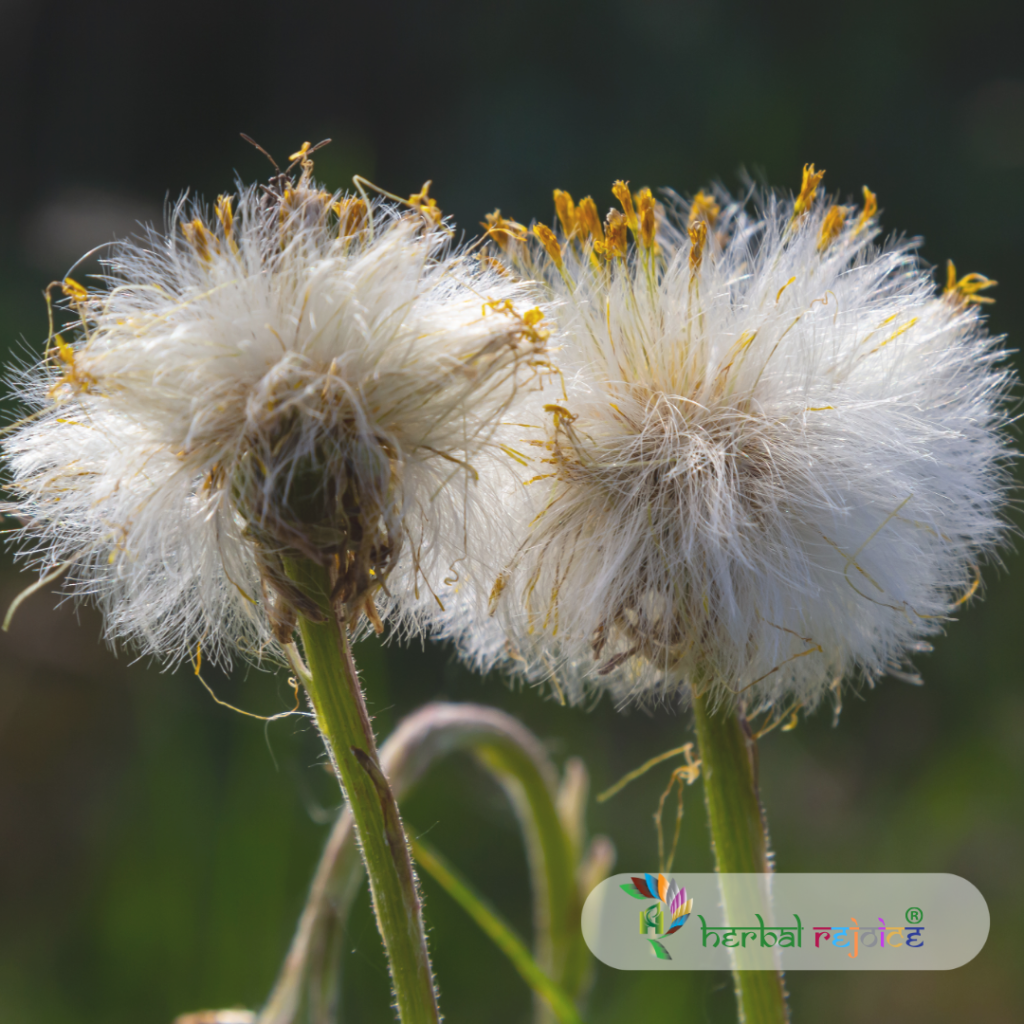Introduction
Tussilago farfara Linn., commonly known as coughwort, coltsfoot, or asses’ foot, is a medicinal plant found in the Western Himalayas, ranging from Kashmir to Nepal at altitudes of 1,500 to 3,500 meters. This plant belongs to the Compositae family, also known as Asteraceae.
Medicinal Uses
The leaves and flowers of Tussilago farfara Linn. have been traditionally used in the Unani system of medicine for their various therapeutic properties. These parts of the plant are known to possess anticatarrhal, antitussive, expectorant, antispasmodic, demulcent, and anti-inflammatory actions.
One of the key applications of Tussilago farfara Linn. is in the treatment of dry, unproductive, irritative coughs, including smoker’s cough and whooping cough. It has also been used for bronchial asthma, although its effects in this condition are short-lived. Additionally, Tussilago farfara Linn. is beneficial in cases of laryngitis.
Components of Tussilago farfara
Research has identified several active compounds present in the leaves and flowers of Tussilago farfara Linn. These include flavonoids such as rutin, hyperoside, and isoquercetin; pyrrolizidine alkaloids like senkirkine and tussilagine; mucilage; inulin; and tannins. Flavonoids possess anti-inflammatory and antispasmodic properties, while pyrrolizidine alkaloids have shown hepatotoxicity in high doses given to rats. However, the destruction of these alkaloids occurs during boiling, reducing their potential harm.
The polysaccharides found in Tussilago farfara Linn. are known to have anti-inflammatory and immuno-stimulating effects. They also act as demulcents, providing soothing relief to irritated mucous membranes. Moreover, the flavonoids present in this plant contribute to its anti-inflammatory properties and help alleviate spasms.
One of the notable components of Tussilago farfara Linn. is an inhibitor of platelet activating factor (PAF). This inhibitor is responsible for the herb’s effectiveness in treating asthma. Additionally, the respiratory stimulant and cardiovascular activities of tussilagone, another constituent of Tussilago farfara Linn., have been observed in animal studies. It has been reported that Coltsfoot has pressor effects similar to dopamine, but without causing tachyphylaxis.

Safety
It is important to note that Tussilago farfara Linn. should be used with caution during pregnancy and nursing, as it is contraindicated in these conditions, according to the German Commission E.
Conclusion
In conclusion, Tussilago farfara Linn., commonly known as coughwort, coltsfoot, or asses’ foot, is a medicinal plant with a range of therapeutic properties. Its leaves and flowers contain active compounds such as flavonoids, pyrrolizidine alkaloids, mucilage, inulin, and tannins. These components contribute to its anticatarrhal, antitussive, expectorant, antispasmodic, demulcent, and anti-inflammatory actions. Tussilago farfara Linn. has been traditionally used for various respiratory conditions, including dry, unproductive coughs, bronchial asthma, and laryngitis. However, caution should be exercised during pregnancy and nursing.
Frequently Asked Questions
What is Tussilago farfara Linn.?
Tussilago farfara Linn is a medicinal plant commonly known as coughwort, coltsfoot, or asses’ foot.
What family does Tussilago farfara Linn. belong to?
Tussilago farfara Linn. belongs to the Compositae family, also known as Asteraceae.
How is Tussilago farfara Linn. used in traditional medicine?
The leaves and flowers of Tussilago farfara Linn. have been used in the Unani system of medicine for their various therapeutic properties.
What are the therapeutic properties of Tussilago farfara Linn.?
Tussilago farfara Linn. possesses anticatarrhal, antitussive, expectorant, antispasmodic, demulcent, and anti-inflammatory actions.
What are the key applications of Tussilago farfara Linn.?
Tussilago farfara Linn. is commonly used in the treatment of dry, unproductive, irritative coughs, including smoker’s cough and whooping cough.
Can Tussilago farfara Linn. be used for bronchial asthma?
Tussilago farfara Linn. has been used for bronchial asthma, although its effects in this condition are short-lived.
What other condition is Tussilago farfara Linn. beneficial for?
Tussilago farfara Linn. is beneficial in cases of laryngitis.
What are the active compounds found in Tussilago farfara Linn.?
The leaves and flowers of Tussilago farfara Linn. contain flavonoids, pyrrolizidine alkaloids, mucilage, inulin, and tannins.
What are the properties of flavonoids?
Flavonoids possess anti-inflammatory and antispasmodic properties.
What risk do pyrrolizidine alkaloids pose?
Pyrrolizidine alkaloids have shown hepatotoxicity in high doses given to rats, but their destruction occurs during boiling.
What effects do the polysaccharides in Tussilago farfara Linn. have?
Polysaccharides found in Tussilago farfara Linn. have anti-inflammatory and immune-stimulating effects. They also act as demulcents.
How do the flavonoids in Tussilago farfara Linn. contribute to its properties?
The flavonoids present in Tussilago farfara Linn. contribute to its anti-inflammatory properties and help alleviate spasms.
How does Tussilago farfara Linn. treat asthma?
Tussilago farfara Linn. contains an inhibitor of platelet activating factor (PAF), which is responsible for its effectiveness in treating asthma.
What other activities does Tussilago farfara Linn. exhibit?
The respiratory stimulant and cardiovascular activities of tussilagone, a constituent of Tussilago farfara Linn., have been observed in animal studies.
Can Tussilago farfara Linn. be used during pregnancy?
Caution should be exercised when using Tussilago farfara Linn. during pregnancy, as it is contraindicated.
Is Tussilago farfara Linn. safe to use while nursing?
Tussilago farfara Linn. should be used with caution during nursing, as it is contraindicated in this condition.
What is the common name of Tussilago farfara Linn.?
Tussilago farfara Linn. is commonly known as coughwort.
Where is Tussilago farfara Linn. found?
Tussilago farfara Linn. is found in the Western Himalayas, ranging from Kashmir to Nepal.
What altitudes does Tussilago farfara Linn. grow at?
Tussilago farfara Linn. grows at altitudes of 1,500 to 3,500 meters.
Are there any potential risks associated with T


